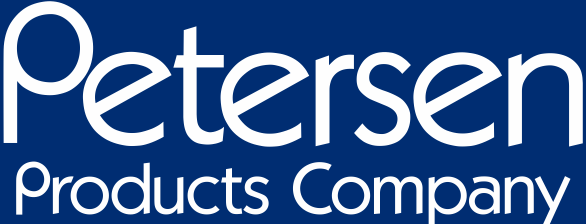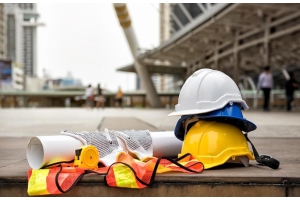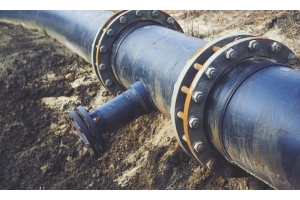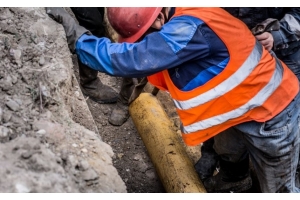Sewer Pipe Lining: A Modern Solution for Effective Sewer Repair


Sewer lines frequently experience significant issues, such as clogs, leaks, and degradation, which can result in costly repairs and inconveniences. Traditional repair methods usually require digging up and replacing damaged pipes, which may be costly and time-consuming.
Sewer pipe lining is a modern, efficient option for sewer repair. This method involves installing a new lining into existing pipes to successfully restore their functionality without the need for major excavation. Sewer pipe lining not only reduces interruption, but also offers a long-term solution to frequent sewer pipe issues.
What is Sewer Pipe Lining?
Sewer pipe lining is a modern repair technique which gives a second life to the damaged or deteriorated sewer lines. The process is carried out without a lot of excavation. The operation includes placing a resin-coated liner inside the damaged pipe.
The first step is to remove the dirt and debris from the pipe ID and inspect the existing pipe pipe for major breaks. A flexible, resin-saturated liner is next put into the pipe and then expanded to seal against internal pipe wall. The expansion may be accomplished by inflation directly or inserting an inflatable packer into the liner. The expansion may be with air, hot water, or steam. Heat or UV light will generally speed the curing process. The resin cures soon after which creates a brand new and much stronger inner layer. This liner provides a smooth, seamless surface that takes care of leaks and other issues, thus the pipe can last longer and at the same time enhance the overall performance.
How Sewer Pipe Lining Works?
Sewer pipe lining is a repair technique which restores aging pipelines without requiring significant excavation. Here's a summarized step-by-step look at how the process works:
- Step 1: Inspection and Assessment - The process begins with a thorough inspection of the pipes using advanced cameras to check their current condition. This assessment helps in the identification of any damage or blockages that require attention.
- Step 2: Cleaning and Preparation - Next, the pipes are thoroughly cleaned to remove debris, scale, and obstructions. This phase creates a smooth surface for the liner to adhere to, hence increasing the effectiveness of the repair.
- Step 3: Liner Installation - A resin-coated liner is installed in the existing pipe. The liner is then extended and inflated using an Inflatable Packer to fit inside the pipe, adapting to its shape and providing a continuous layer of protection.
- Step 4: Curing - The resin within the liner is allowed to dry and harden, resulting in a strong new pipe inside the old one. This technique solidifies the repair and restores the pipe's function.
- Step 5: Final inspection - Following curing, perform a final inspection to guarantee the integrity and performance of the freshly lined pipe. This verifies that the repair fulfills all standards and the pipe is suitable to use.
Advantages of Sewer Pipe Lining
Sewer pipe lining has several significant advantages over typical repair methods. Its innovative solution effectively addresses common sewer issues while reducing discomfort and expenses. Here are some of the main advantages:
- Non-Invasive Method: Sewer pipe lining is a minimally invasive technique that reduces disruption to landscaping and existing structures. By avoiding considerable digging, thus preserving the surrounding area's integrity while the impact on daily operations is reduced.
- Cost-Effectiveness: This procedure is often less expensive than traditional dig-and-replace techniques. It reduces labor, excavation, and restoration costs, making it an affordable sewer repair solution.
- Durability: Sewer pipe lining provides a new, stronger inner layer, extending the life of existing pipes. The resin-coated liner resists corrosion, leaks, and other frequent difficulties, ensuring a long-lasting fix.
- Efficiency: Installing sewer pipe lining is usually faster than traditional methods. The procedure is streamlined and creates minimum delay, resulting in faster turnaround and less downtime.
Applications of Sewer Pipe Lining
Sewer pipe lining is a versatile solution that meets a wide range of pipe repair requirements. Its flexibility allows it to be used in a variety of situations and settings.
Here’s a list of applications of Sewer pipe lining:
- Residential and Commercial Properties: Ideal for repairing and renewing sewer systems in homes and businesses, with minimal interruption and no need for substantial digging.
- Municipal Sewer Systems and Infrastructure: Effective for upgrading and maintaining large-scale municipal sewer networks while reducing damage on public spaces and infrastructure.
- Specialized Cases: Especially suitable for pipes with severe corrosion or significant damage, where traditional repair methods might be less successful or feasible.
Comparing Sewer Pipe Lining to Traditional Sewer Repair Methods
When comparing sewer repair options, it's important to understand how sewer pipe lining compares to the traditional methods:
Traditional Methods
Dig-and-replace procedures are commonly used in sewer repair, requiring significant excavation to reach and replace broken pipes. This method can be disruptive, causing severe damage to landscaping, driveways, and other structures. The process is both time-consuming and labor-intensive, which frequently results in greater costs and longer downtime.
Disadvantages of Traditional Methods
Traditional methods can significantly disrupt daily routines and infrastructure. The excavation required might lead to additional costs for restoring the impacted areas, such as replanting landscaping or rebuilding driveways. Also, the significant excavating required may damage surrounding utilities and structures.
In contrast, sewer pipe lining provides a more efficient and less invasive alternative, reducing interruption as well as lowering overall repair costs.
Conclusion
Sewer pipe lining is a modern, practical approach for sewer repairs which offers multiple key benefits over traditional techniques. Its non-invasive method reduces interruption to property and existing structures, making it an economical and efficient option.
Sewer pipe lining increases the life of your sewer system by offering a flexible, long-lasting repair that reduces the need for extensive excavation and restoration. For anyone experiencing sewer pipe problems, considering sewer pipe lining can result in a more streamlined and reliable repair process, assuring the long-term maintenance and performance of your sewer system.
FAQs About Sewer Pipe Lining
Does Sewer Pipe Relining Work?
Yes, sewer pipe relining is a highly efficient way to fix broken sewer lines. Inserting a resin-coated liner into an existing pipe generates a new, more robust inner layer that fixes cracks, leaks, and corrosion. This technology restores pipe functionality without the need for significant excavation
How Long Do Sewer Pipe Relining Last?
Sewer pipe relining can be a long-term solution, lasting 50 years or more. The durability of the relining is affected by a variety of factors, including the quality of the materials used and the condition of the original pipes.
How Much Does Sewer Pipe Relining Cost?
Sewer pipe relining costs vary according to requirements such as pipe length and diameter, level of damage, and local labour rates. However, because it is non-invasive and has lower labour and repair expenses, it is frequently less expensive than traditional dig-and-replace procedures.
Can Sewer Pipe Relining Be Used on Any Type of Pipe?
Sewer pipe relining is versatile and can be used on a variety of pipes, including clay, PVC, and cast iron. However, the efficiency of the relining can vary depending on the state of the existing pipes and the type of damage they have experienced.
What Maintenance Is Required After Sewer Pipe Relining?
After sewer pipe relining, minimal maintenance is required. Regular inspections and cleaning are necessary to keep the pipes in good condition. Avoiding strong chemicals and dirt in the system will help to maintain the integrity of the new lining and prolong its lifespan.
Petersen Multi-Flex Packers expand the sewer pipe liner and there are many capable relining contractors who can specify the type of relining materials applicable for your specific requirements.
Disclaimer: Use any product or process in accordance with all applicable laws, including federal, state, and local regulations, and with manufacturer-specified instructions.






